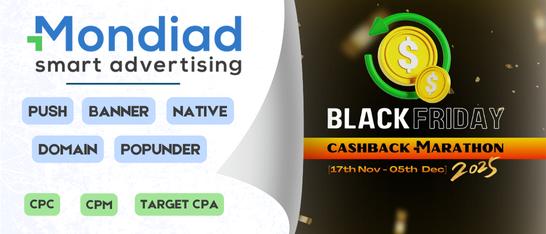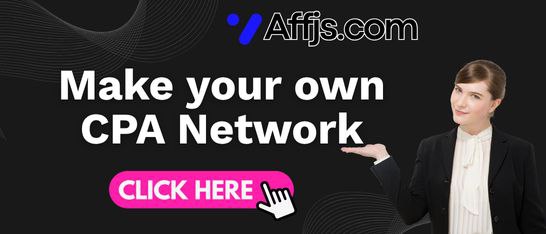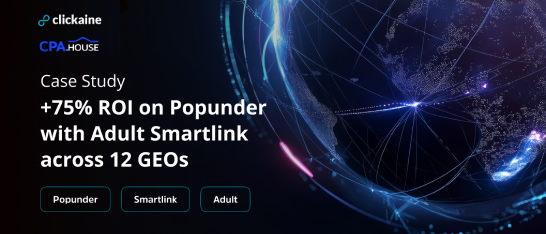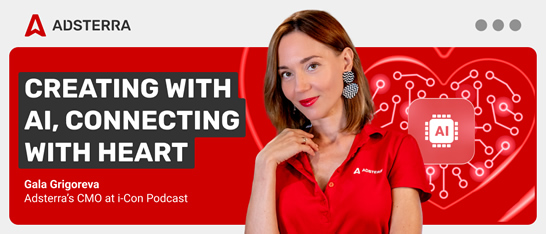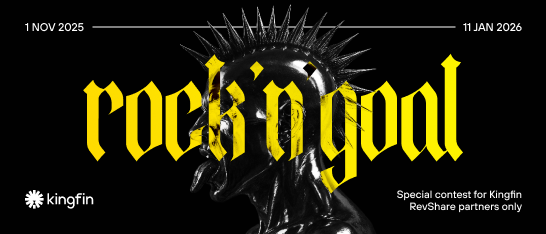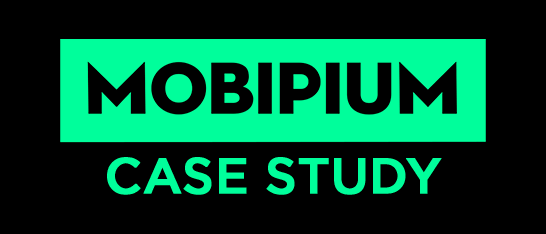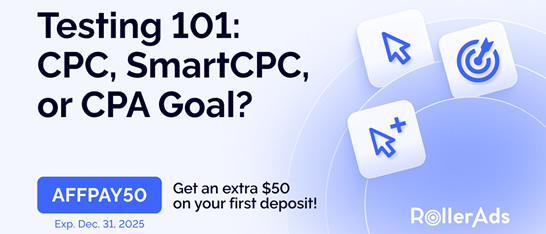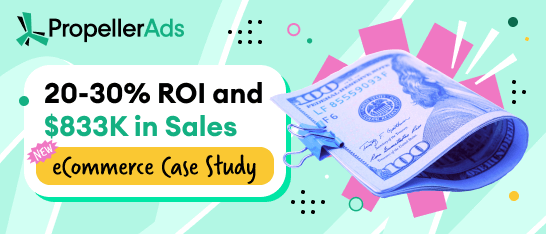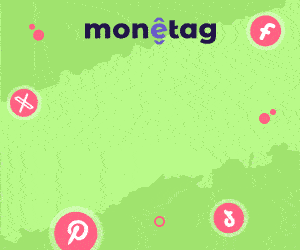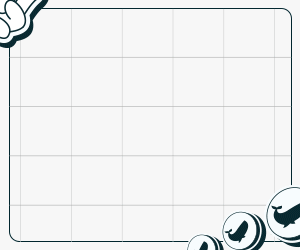Commission-based eCommerce offers can scale fast, but keeping ROI steady while you scale is the hard part.
This breakdown shows how a media buying team along with their Account Manager Sotos Charalambous used mostly Push ads (+ other formats) on PropellerAds to generate $833K+ in sales while holding a 20–30% ROI (peaking at 225% in one month). You’ll see the setup, timeline, and the exact optimization habits that kept margins healthy.
The Setup: Offers And Bidding Model
The team ran two types of offers:
A global marketplace with a wide product range (Project A)
A fast-fashion retailer targeting younger audiences in Tier-1 markets (Project B)
Both were commission-based, meaning higher payouts for new customers and repeat conversions. Campaigns ran on CPA Goal bidding, which automatically optimized bids toward a target cost per sale. Conversions were tracked through postback integration, ensuring data accuracy.
The main ad format was Push notifications, which were chosen for their volume, responsiveness, and ability to reach mobile users across multiple GEOs.
Testing → scaling → optimization (campaign spine)
Here is the campaign flow used in both cases (you can apply these tips to your eCommerce campaign - we find them pretty universal):
Warm-up (pre-launch):
Kick off ~1 week before seasonal peaks (Singles’ Day, Ramadan, Black Friday). This “soak” period builds data and stabilizes delivery before the traffic surge.
Days 1–7 — Test:
Go broad on GEOs, devices, and zones.
Rotate landers to see what works: try default product pages, trending collections, seasonal sale pages.
Expect delayed conversions; don’t chop zones too early. The only goal this week is clean signal and baselines.
Days 8–20 — Scale:
Raise budgets on winners gradually.
Exclude weak zones/sources; tighten placements that show cancellations.
Nudge CPA Goal to protect margin when volume spikes.
Ongoing — Maintain:
Bi-weekly zone pruning for low CR.
Monthly cancellation audit to blacklist unprofitable zones and keep them from eating budget.
Keep iterating creatives/landers; don’t assume a winner stays a winner forever.
This simple spine prevented early over-optimization, then turned solid signal into reliable scale.
Results: Stable ROI Across Projects
What the numbers looked like (at scale):
Total ecommerce sales: $833K+
Sustained ROI: 20–30%
Peak month: ~$99K revenue on ~$30K spend (≈225% ROI) during a strong seasonal window.
The global marketplace campaign (project A) ran over a year with month-to-month variance but steady profitability. The fast-fashion retailer (project B) ran 4–5 months with particularly strong performance in premium markets.
The big picture: Push traffic held up under scale when paired with the optimization loop above.
Project A (Global marketplace)
Here are the full settings:
Period: over a year
Main format: Push
Top Geos: MX, FR, ES, IL, IT, CL, DE, BR, SA, KR, CO, PE, GH, NL
Platform: Android
Total sales: $833K
Total Spend: $687K
Average ROI: 20%+
Peak month: April 2025 with 225% ROI on $30K spend.
Project B (Fast fashion retailer)
And here are the settings of the second campaign:
Period: 4–5 months
Ad formats: In-Page Push for iOS, Push, Survey Exit
GEOs: Western Tier-1 countries
Total Sales: 292,150
Total Spend: $836,145
Average ROI: 39.7%
Platform: Stronger performance on iOS traffic in Tier-1 markets
Together, the projects showed that push traffic can scale to high volumes while staying profitable, provided that campaigns are optimized continuously.
Key Takeaways For Affiliates
Treat device and market differently
Android tended to convert in budget-conscious GEOs with mobile-first shopping behavior.
iOS skewed stronger in higher-income Tier-1 markets.
Match bids, landers, and creative angles to the device × GEO reality—not a global average.
Launch into the trend, don’t chase it
Start a week ahead of calendar spikes so your users are already warmed up and ready to convert when demand hits.
Run multiple landers for testing
Default PDPs, hot collections, sale hubs; test them all. Different markets and devices respond to different shopping paths. Keep winners in rotation and re-test monthly.
Prune with a routine, not a mood
Every 2 weeks: kill low-CR ZoneIDs.
Monthly: remove sources with high order cancellations.
Consistent pruning is how you keep ROI steady while budgets rise.
Expect and account for conversion lag
Don’t score a test after 24 hours if your vertical shows delayed sales confirmation. Bank enough data before making cuts, or you’ll turn off tomorrow’s profit today.
Creative angles that worked (and why)
Timely promos (holiday/seasonal hooks) to match sale urgency.
Category and deal-led pushes (e.g., “flash deals,” “trending collection”) to tap bargain-seeking behavior.
Short, scannable copy suited to push—benefit first, then urgency.
These angles map to the buyer intent you’re intercepting on mobile: quick scan → quick click → quick cart.
Closing Thoughts
Push remains a workhorse for eCommerce when you:
1) start early, 2) test deliberately, 3) scale with CPA Goal tied to actual payouts, and 4) prune placements on a schedule! That’s how this team maintained 20–30% ROI while driving $833K+ in sales, with a 225% ROI spike during a peak month—proof that volume and margin aren’t mutually exclusive.
With that in mind, join PropellerAds for high-quality traffic and start earning!

